Introduction
Ardha Matsyasana, also known as Half Fish Pose, is a reclining backbend that opens up the chest, stretches the throat, and strengthens the upper back.
This asana is named after the Sanskrit words “Ardha” (half) and “Matsya” (fish), symbolizing the grace and fluidity of a fish in water
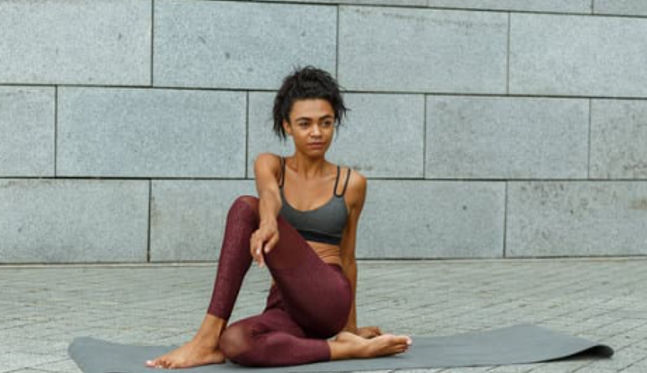
It is a modified version of the full Matsyasana (Fish Pose) and is an excellent heart-opening pose that brings relief to the spine and chest while also helping with respiratory function.
Practicing Ardha Matsyasana helps increase energy levels, improve posture, and provide a deep stretch to the neck and shoulders, making it a vital part of any restorative yoga practice.
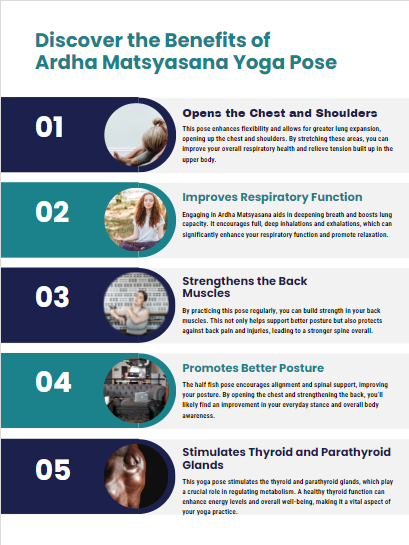
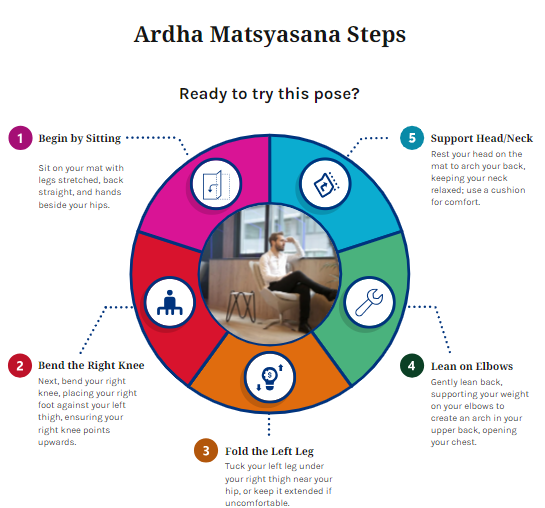
Steps to Perform Ardha Matsyasana Yoga Pose/Half Fish Pose
- Begin by Sitting: Sit on your mat with your legs extended straight in front of you. Keep your spine straight and hands resting beside your hips.
- Bend the Right Knee: Bend your right knee and bring your right foot towards your left thigh, so your right knee is pointing upwards.
- Fold the Left Leg: Tuck your left leg underneath your right thigh, ensuring the left foot is close to the right hip. If this feels uncomfortable, you can also keep the left leg extended straight.
- Lean Back on Your Elbows: Slowly lean backward, supporting yourself on your elbows. This will begin to create the arch in your upper back, allowing the chest to open up.
- Support the Head and Neck: Gently rest the crown of your head on the floor, creating an arch in the upper back. Your neck should feel comfortable, and there should be no strain in this position. If the head does not comfortably reach the floor, you can use a cushion or block for support.
- Engage the Arms: Your arms can rest either alongside your body or in a position where they are extended behind your head, palms facing upward. This opens the chest further and enhances the stretch.
- Focus on the Breath: Breathe deeply, allowing the chest to expand with each inhale and relaxing deeper into the pose with each exhale. Maintain the pose for 30 seconds to 1 minute.
- Release the Pose: To come out of the pose, slowly lift your head, return to your elbows, and sit upright. Then, switch legs and repeat the pose on the opposite side.
Benefits of Ardha Matsyasana Yoga Pose/Half Fish Pose
- Opens the Chest and Shoulders: Ardha Matsyasana creates a powerful stretch in the chest and shoulders, which helps relieve tightness caused by poor posture or long hours of sitting.
- Improves Respiratory Function: The chest-opening action enhances lung capacity and helps improve breathing by encouraging deeper inhalations and exhalations, making this pose beneficial for those with asthma or other respiratory conditions.
- Strengthens the Back Muscles: The backbend in this pose strengthens the muscles in the upper and lower back, helping to prevent or alleviate back pain.
- Promotes Better Posture: Regular practice of Ardha Matsyasana helps correct slouched posture by strengthening the muscles along the spine and encouraging a more open and upright stance.
- Stimulates the Thyroid and Parathyroid Glands: By stretching the neck and throat, this pose stimulates the thyroid and parathyroid glands, which helps regulate metabolism and calcium levels in the body.
- Enhances Digestion: The mild compression of the abdomen in this pose stimulates the digestive organs, improving metabolism and relieving indigestion and bloating.
- Relieves Stress and Fatigue: The heart-opening nature of this pose helps release tension stored in the chest and shoulders, promoting relaxation and relieving stress.
- Increases Energy and Vitality: Ardha Matsyasana helps balance energy flow in the body, making it a revitalizing pose that can increase physical energy and mental clarity.
- Supports Emotional Release: As a heart-opener, this pose is believed to release emotional blockages and promote a sense of openness and vulnerability, which can aid in emotional healing.
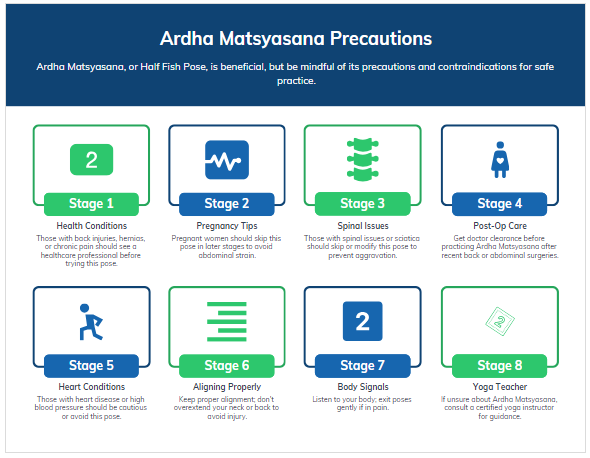
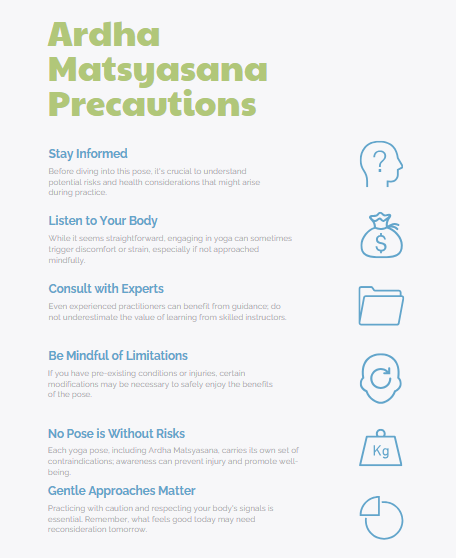
Precautions and Contraindications of Ardha Matsyasana/Half Fish Pose
- Neck or Spine Injuries: People with neck or spine injuries should avoid this pose or perform it with extreme caution. The backbend and neck extension can aggravate these conditions if not done carefully.
- Heart Conditions: Those with serious heart conditions should practice this pose under the guidance of a yoga instructor, as the chest opening and backbend can place strain on the cardiovascular system.
- High or Low Blood Pressure: If you suffer from high or low blood pressure, approach this pose cautiously. Deep backbends can affect blood circulation, so it’s important to listen to your body and avoid holding the pose for too long.
- Spondylitis or Back Issues: Individuals with spondylitis, herniated discs, or severe back pain should avoid Ardha Matsyasana or modify it to avoid deep backbends.
- Vertigo or Dizziness: If you experience vertigo or dizziness, avoid letting the head drop back too far in this pose. You can modify the pose by keeping your head lifted slightly or using a block to support the head.
- Pregnancy: Pregnant women, particularly in the second and third trimesters, should avoid deep backbends like Ardha Matsyasana, as they can put unnecessary pressure on the abdomen and lower back.
- Migraine or Chronic Headaches: Those with migraines or chronic headaches may experience discomfort in this pose due to the positioning of the head and neck. It is best to modify the pose or avoid it altogether if you suffer from these conditions.
Conclusion
- Ardha Matsyasana, or Half Fish Pose, is a gentle yet effective yoga posture that offers numerous benefits for the body and mind.
- It is a versatile pose that enhances flexibility, strengthens the back, improves lung capacity, and stimulates various organs, making it an essential pose in many yoga sequences.
- Its ability to open the heart and chest makes it especially beneficial for those looking to improve posture, alleviate stress, and boost overall vitality.
- However, as with all yoga poses, it is important to approach Ardha Matsyasana mindfully and with respect for your body’s limits.
- Practitioners should pay attention to any signs of discomfort or strain, particularly in the neck and back, and make modifications as needed.
- With regular practice, this pose can help unlock physical and emotional tension, leaving you feeling rejuvenated, open-hearted, and grounded.
- Whether you are new to yoga or an experienced practitioner, incorporating Ardha Matsyasana into your practice can provide a well-rounded stretch and promote a deep sense of relaxation and inner balance.
